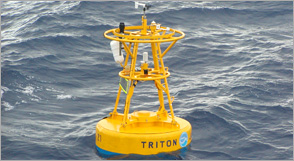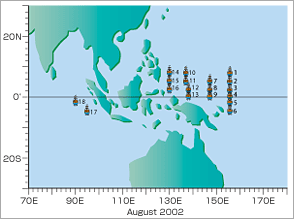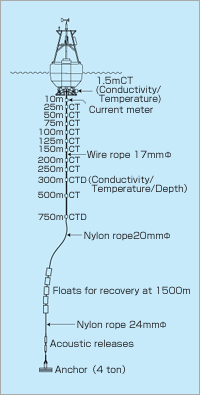Investigating the Atmosphere
Doppler Radar
Investigating Clouds with Radio Waves
Doppler radar measures wind in precipitating clouds and the amount of rain drops by emitting radio waves from parabolic antenna to the targeted subject of clouds and by processing the reflected waves coming back from the target. We can analyze the structure of clouds development and the causing characteristics of precipitation through the data.
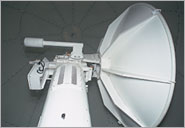
Radiosonde
Investigating the Upper Atmosphere with Balloons
A radiosonde is a small lightweight instrument connected to a rubber made balloon filled with helium or hydrogen gas. It is launched into the atmosphere to measure thermodynamic conditions (temperature, humidity and pressure). The observed data are transmitted to the surface station by a small radio transmitter. Wind direction and wind speed are obtained by GPS tracking of the radiosonde. The collected data is used for research purposes and also utilized in daily forecast through the GTS (global telecommunication system).
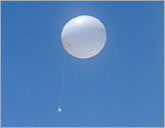
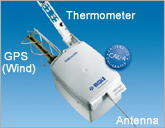
TRITON buoy
Atmospheric and Oceanic Observation in the Pacific and Indian Oceans
The TRITON array (Triangle Trans-Ocean Buoy Network) is a network of observational buoys and is deployed in the western tropical Pacific and eastern Indian Oceans for the purpose of understanding the phenomena of climate variability, such as El Nino in the Pacific Ocean, Indian Ocean Dipole Mode, and the Asian Monsoon. TRITON buoys observe wind, air temperature, humidity, air pressure, precipitation, solar radiation, and ocean currents, as well as water temperature and salinity to a depth of 750 m. The data is transmitted via satellite in real-time, and provided to researchers around the world, and is also utilized by operational meteorological agencies in a world for daily weather forecasts. Meteolojical/oceanographic data were collected at a total of 18 spots in tropical Pacific Ocean and Eastern Indian Ocean.
